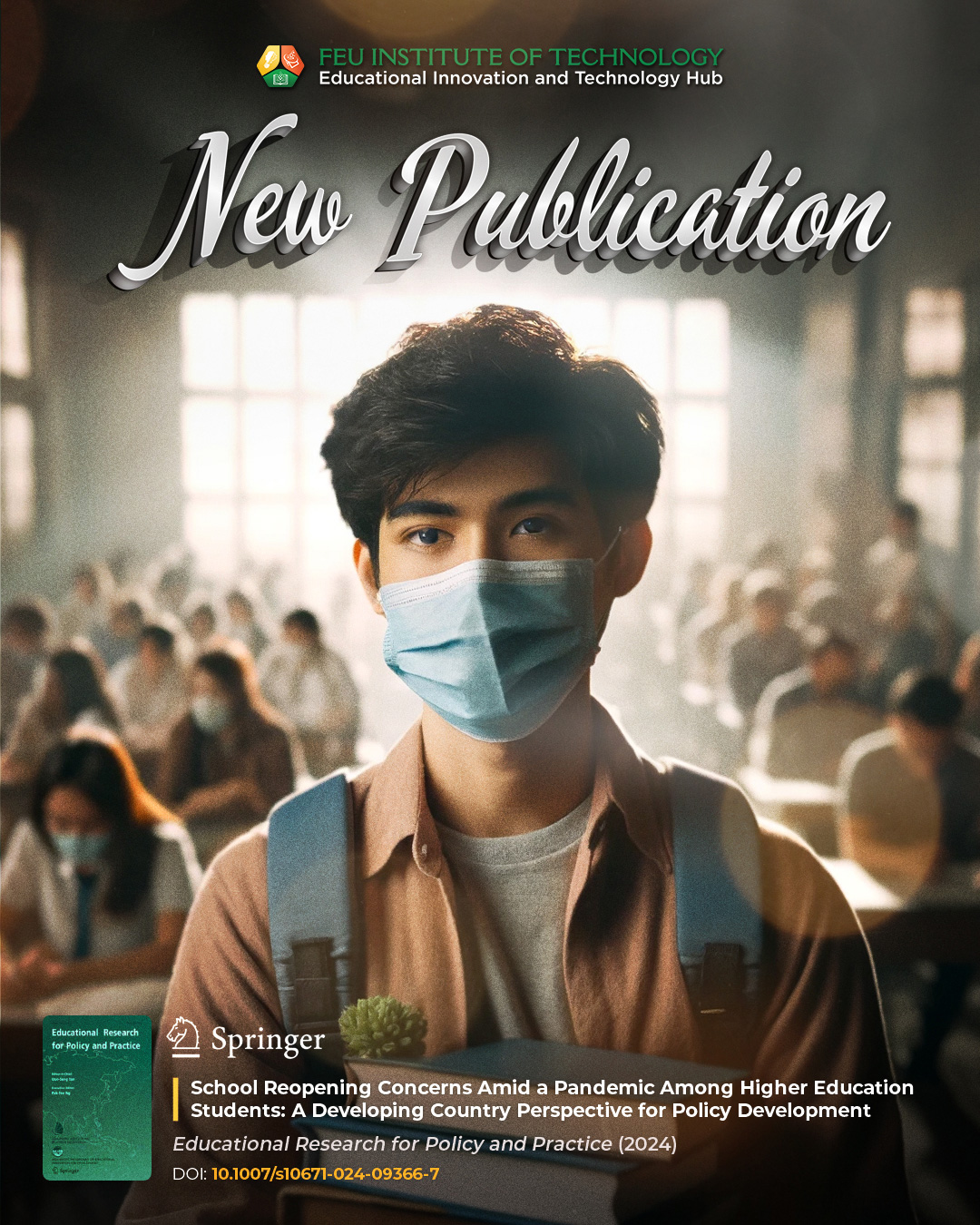Exploring Policy Development Initiatives for Reopening Schools for Higher Education Amid a Pandemic
In this research, Dr. Garcia explored the opinions and concerns of higher education students regarding school reopening during a pandemic.
April 22, 2024
Research
The COVID-19 pandemic from late 2019 to mid-2023 shifted the world’s dynamics into the new normal, where we can function remotely using technology. During this time, governments ordered school closures, a typical policy response during crises. However, transitioning to an emergency remote learning (ERL) setup caused some difficulties for the students, including technological barriers and psychosocial factors, among other concerns. Educational institutions and individuals eventually adjusted to the circumstances.
As the pandemic dwindled, although not necessarily ended, schools reopened. Various stakeholders, like school system authorities, consulted public health authorities, and public officials encouraged school reopenings for site-based instruction. However, students weren’t able to share their perspectives about the decision. Their ideas could offer insightful information about the student body’s requirements and difficulties.
Emphasizing Student Concerns from a Developing Country
The recently published qualitative study, “School Reopening Concerns Amid a Pandemic Among Higher Education Students: A Developing Country Perspective for Policy Development,†by Manuel B. Garcia, a Licensed Professional Teacher (LPT) and a professor of information technology at FEU Institute of Technology), looks into the concerns of higher education students on school reopening amid an ongoing pandemic threat.
It applied a content analysis approach to examine reflective essays students submitted in response to the assigned questions. Moreover, the study purposively selected respondents from public and private universities from rural and urban areas. Their deliberate inclusion from diverse geographical settings enables a comprehensive representation of the higher education student population.
Respondents created five to eight-paragraph reflection papers, averaging 1,588 words, to share their thoughts about returning to school. The sentiment analysis component focused on addressing students’ emotional disposition, while the thematic analysis identified the concerns to address before resuming in-person classes.

Discovering Sentiments and Concerns
Four core themes emerged from the data, which underscored safety, academics, health, and finances as concerns to address before returning to school and their sentiments upon learning of the academic decision.
One of the prevailing worries is health and safety. Students are skeptical about commuting or going to school and encountering non-vaccinated individuals who could pose potential health risks. Fortunately, the Commission on Higher Education (CHED) did its best to address health-related concerns by mandating vaccination and implementing health protocols. They also retrofitted facilities to meet modern demands among students who experienced the new normal learning environment.
Meanwhile, the respondents had mixed emotions about returning to school. Although many considered the safety and education dilemma, some were excited about returning to face-to-face education, while others thought otherwise.
The study also emphasized the relevance of fostering inclusivity in the education system throughout a post-pandemic world. While it is vital to prioritize students with mental health issues, institutions should also consider the needs of other vulnerable student groups when deciding about school reopenings.
Policy Development That Considers Students
Since the study emphasizes the policymaker’s vital role in engaging students as catalysts for change, it’s relevant that the students’ preferences can influence significant decisions in the education system. The data collected from the study can be an example of a determinant that stakeholders can consider.
Collaborative decision-making and inclusive dialog with all stakeholders can result in well- informed choices and more robust solutions. The success of these reopening efforts relies heavily on the active participation and support of all stakeholders.
Their decisions should prioritize everyone’s safety by enforcing strict health protocols and measures to maintain a safe learning environment to foster security and confidence within the school premises.
In conclusion, the study encourages policymakers to consider student sentiments and their various group to enact a well-rounded return to face-to-face classes. Similar to how the world shifted to the remote, hybrid setup, it takes careful preparation to transition to a face-to-face learning scenario amid a post-pandemic world.
Patricia Bianca S. Taculao-Deligero is a Bachelor of Arts in Journalism Graduate from the University of Santo Tomas. She has an extensive portfolio from working in various local media outlets, with articles focusing on lifestyle, entertainment, agriculture, technology, and local government units, among other subjects. Her specialty is in feature writing. She is also proficient in news writing.
